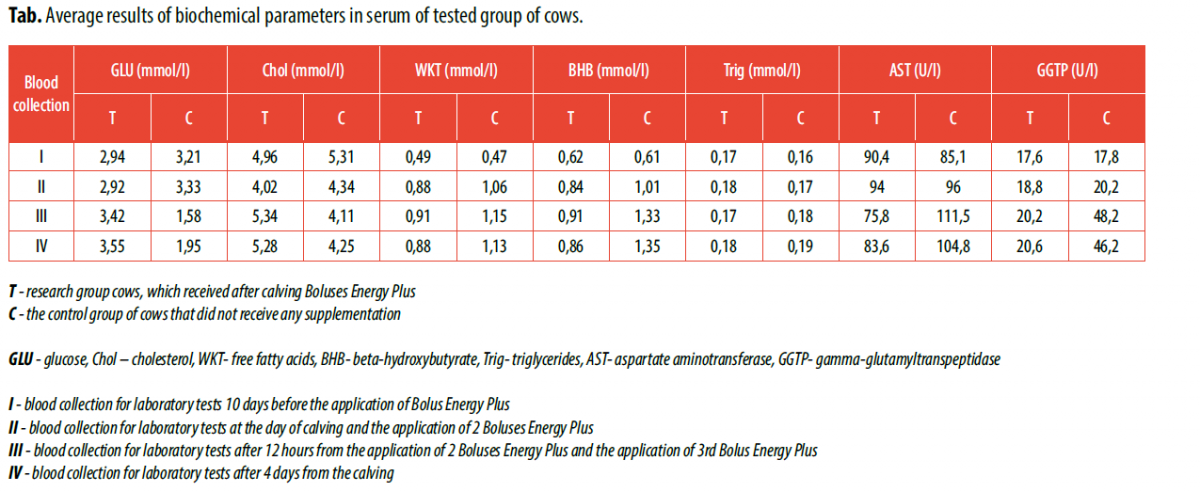The results of laboratory and clinical test of Bolus Energy Plus
Evaluation report of laboratory and clinical test of
Bolus Energy Plus for dairy cows
produced by Jfarm in Ostroleka, ul. Magazynowa 1 A
Research and test of Energy Plus Bolus were carried out in 2015 by in vivo method in cooperation with the University of Warmia and Mazury in Olsztyn, under the guidance of prof. Przemyslaw Sobiech (Faculty of Veterinary Medicine).
In order to assess the effectiveness of Bolus Energy Plus used as a prophylaxis in transition period, tests were made on 12 pcs clinically healthy dairy cows breed HO, which were in the second pregnancy. All animals used in the experiment for 10 days before calving showed a degree of BCS 4 above (indicating their fatness) and serum contents betahydroksymaślanu (BHB) above 0.6 mmol / l (indicating the risk of postpartum subclinical ketosis).
The animals were divided into two groups – the study group consisted of six cows which on the day of calving and after 12 h after calving was applied Bolus Energy Plus (dose in accordance with the manufacturer’s instructions), the control group were cows without such supplementation. All animals were maintained under the same environmental conditions and were given the same feed. Cows were subjected to clinical observation and 10 days before the calving, on the day of calving, 48 h after calving and on the fourth day after bolus application has been taken from their blood in order to determine the serum following biochemical parameters: concentration of BHB, glucose, free fatty acids (FFAs ), triglycerides, cholesterol and aspartate aminotransferase (ASP) and gamma glutamyl transpeptidase (GGT).

BOLUS ENERGY PLUS produced by JFARM is a reasonable and very effective product supporting therapy and prevention of diseases of the transitional period: ketosis and fatty liver disease associated with negative energy balance.
The use of BOLUS ENERGY PLUS of JFARM also has a positive effect on the improvement of the immune status and fertility in dairy cows. Thus, increases profitability cattle production and reduces losses due to a decrease in milk production, culling, metabolic diseases.

